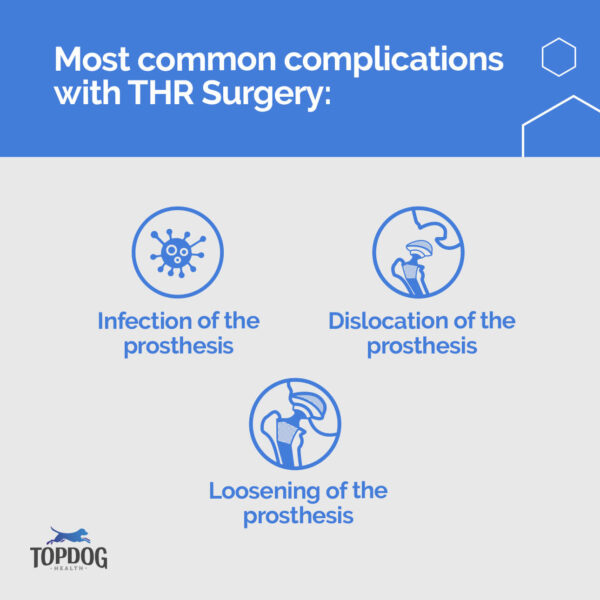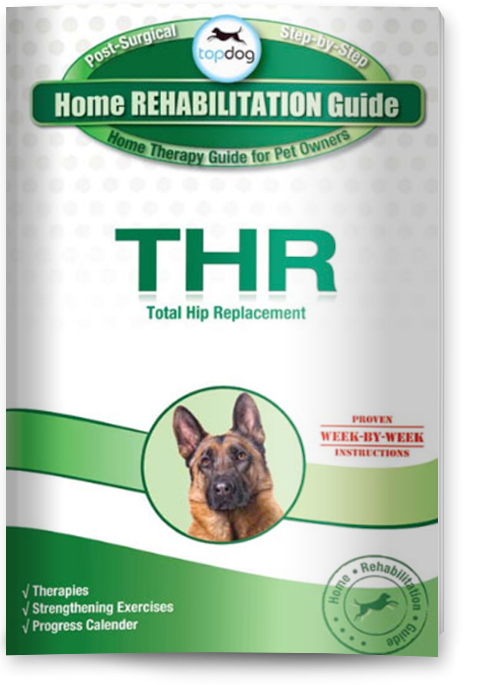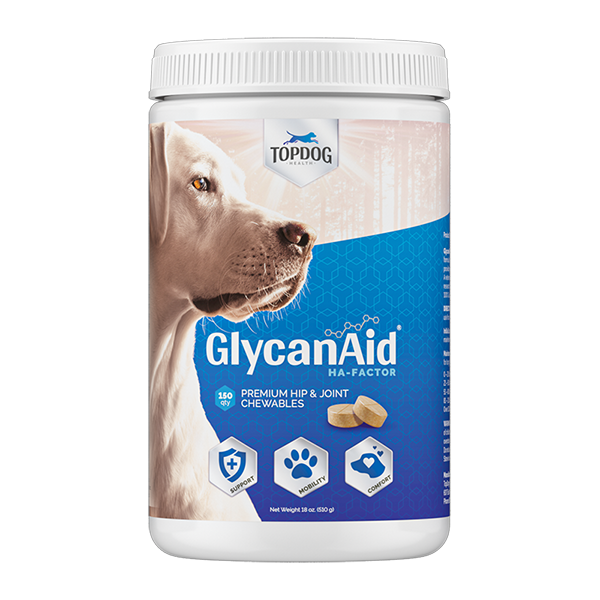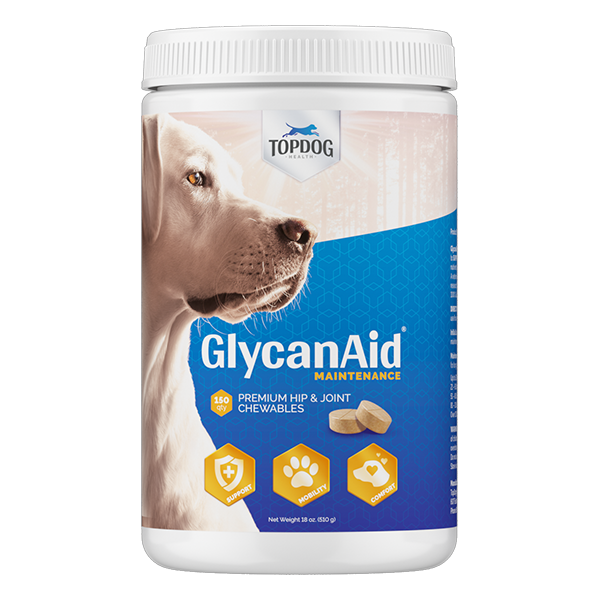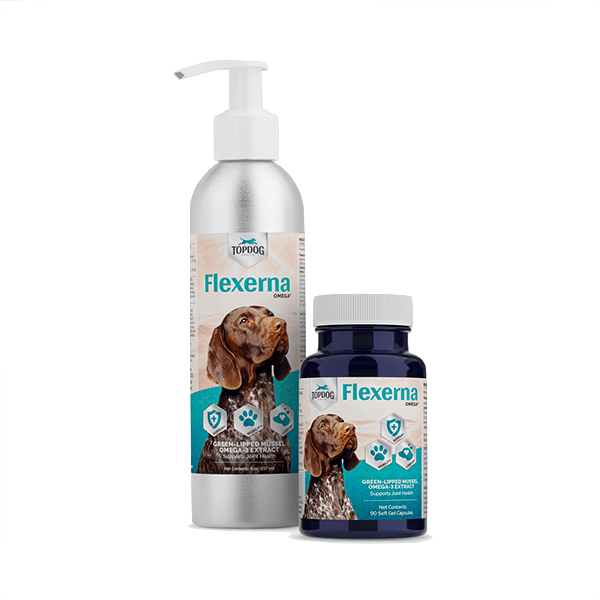What is Dog Total Hip Replacement (THR) Surgery?
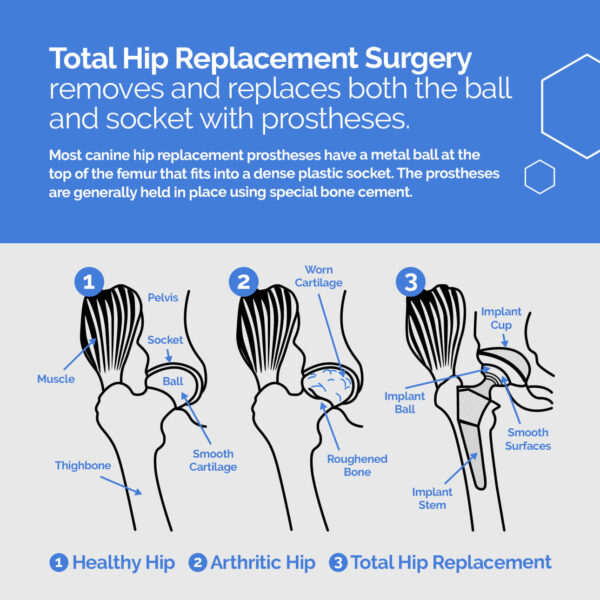
The Total Hip Replacement (THR) for dogs is an impressive surgical option for any dog suffering from hip dysplasia or a traumatic hip injury. Generally, this procedure is only performed by a board-certified surgeon in a specialty veterinary hospital. Your average general practitioner does not perform this procedure.
A total hip replacement is a surgical procedure that involves the replacement of the diseased cartilage and bone of the hip joint. These are then replaced with a prosthesis or “artificial joint”.
Depending on the surgeon, they may or may not then choose to use bone cement to secure it into place. The efficacy of using bone cement versus not using it has not yet been proven.
Dogs that have a total hip replacement can live a pain-free life that allows them to function with a near-normal range of motion, which is an extraordinary gift to them. RETURN TO TOP
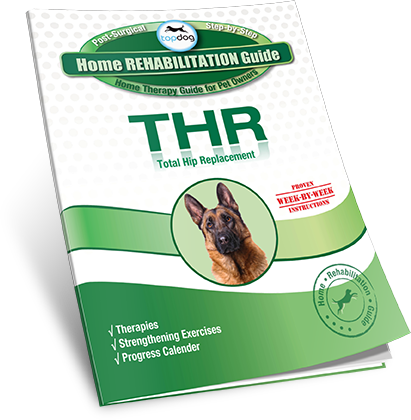
98% of Pet Owners Say this Guide is a Must for Recovery
What is the cost?
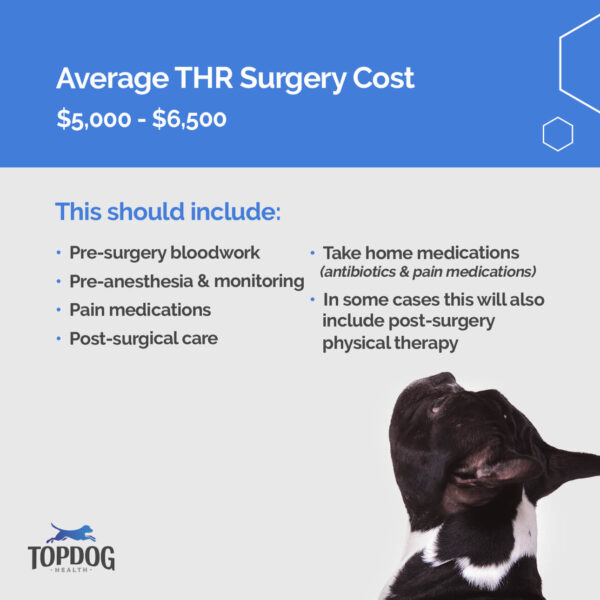
Since this is an advanced surgical procedure generally speaking a Total Hip Replacement is one of the more expensive surgeries performed in veterinary medicine. That said, the long-term benefits far outweigh the cost, the vast majority of the time and it is well worth exploring it as an option for your dog.
As expected the costs can vary depending on the area where you live, and the specific surgeon. Typically a THR can roughly cost anywhere between $5,000-$6,500.
Most of the time these costs include pre-surgical bloodwork, anesthesia, surgery, and all medications. In some cases, hospitals may even include post-surgical physical therapy with the complete surgical/recovery package.
Make sure you call around to your local specialty referral hospitals with board-certified surgeons to get your most accurate assessment. RETURN TO TOP
What are the alternatives?
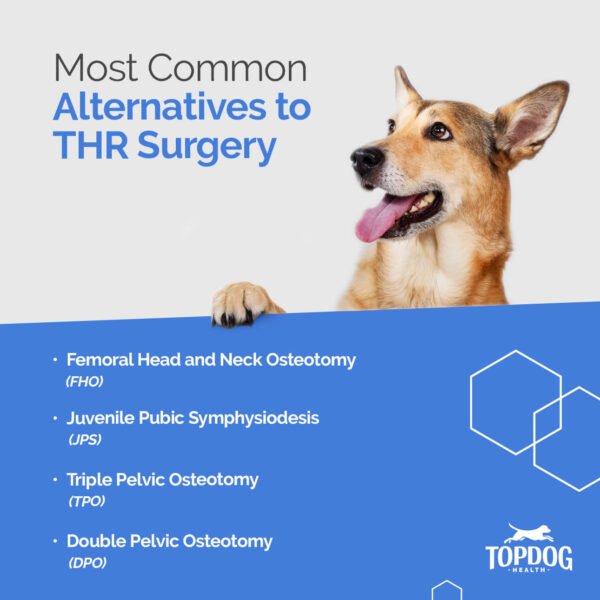
Even though the total hip replacement is a great surgery it is not always the best option for a patient or their family. Whether it is due to age, weight, degree of current joint disease, or in many cases personal finances, it is comforting to know that there are alternatives that are also extremely successful in their own rite. The most common ‘‘next best option’ is by far the Femoral Head and Neck Osteotomy (ie. FHO). See the FHO Surgery Page to learn if this is the best alternative for your dog.
The least expensive alternative, at least in the short term, is creating a comprehensive pain management plan and then also including a comprehensive joint nutrition supplement and hopefully if available physical therapy and acupuncture.
Typically the first ‘go-to’ medication is Non-Steroidal Anti Inflammatories or NSAID, which will help reduce and prevent inflammation in your dog’s joint, which is one of the primary sources of their pain. Depending on the veterinarian and the degree of your dog’s pain, they may also include additional pain medications that work synergistically with these anti-inflammatories.
Keep in mind, whichever option you choose, Weight Management, is hands down, massively crucial in the long-term success picture. This cannot be emphasized enough, so please make sure to discuss with your veterinarian what your dog’s ideal body weight should be.
Overall, these alternative methods are here to only ease some of the dog’s pain, while not actually solving the initial problem itself. These are options that you can discuss with your veterinarian, to see what is best for your dog based on their medical history and surgical candidacy. RETURN TO TOP

98% of Pet Owners Say this Guide is a Must for Recovery
What you need to know about recovery?
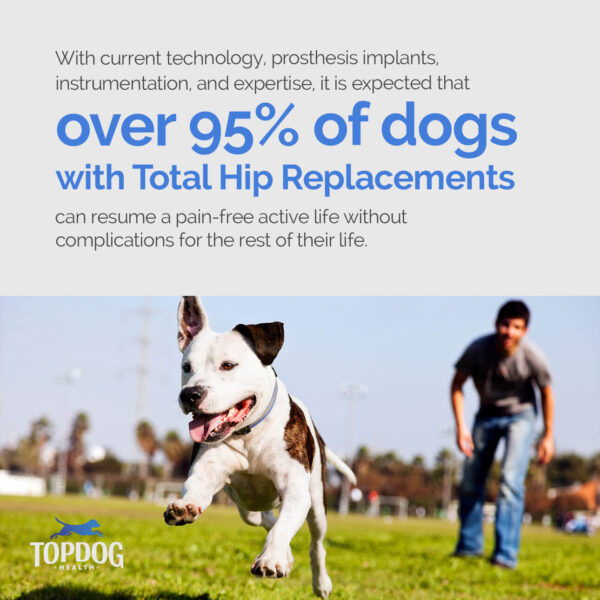
When it comes to the recovery process length, a 12 week recovery period is ideal to ensure proper healing. However, after the initial 12 weeks, returning to pre-surgery activity immediately is not recommended. The key to the recovery process is controlled exercises. While your dog will be feeling better post-surgery with pain meds on board, they may overextend themselves and injure their surgical site. Not controlling your dog during this time may be a cause for a re-evaluation and possibly another surgery.
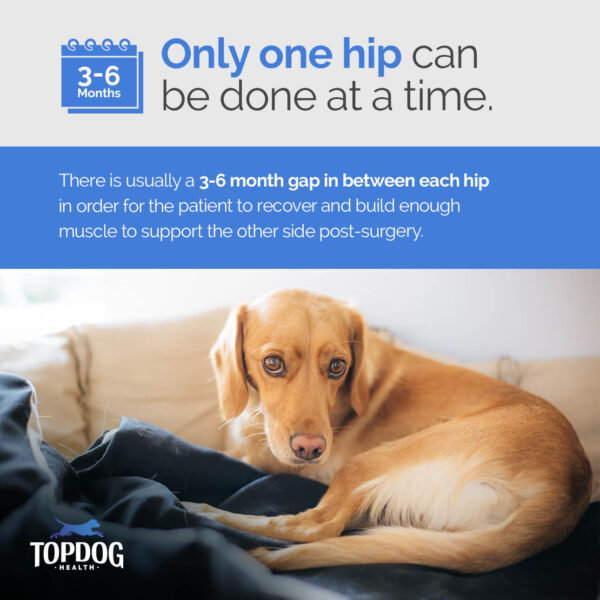
Since only one hip can be done at a time, there is usually a 3-6 month gap in between each hip in order for the patient to recover and build enough muscle to support the other side post-surgery. Sometimes, a second surgery is then not needed, but a re-evaluation is necessary. Pain control, joint supplements, and low-impact controlled exercises to increase the hind leg muscles will give your dog the best chance at an ideal recovery. We have week-by-week recovery guides available to help you every step of the way through your dog’s recovery process. RETURN TO TOP
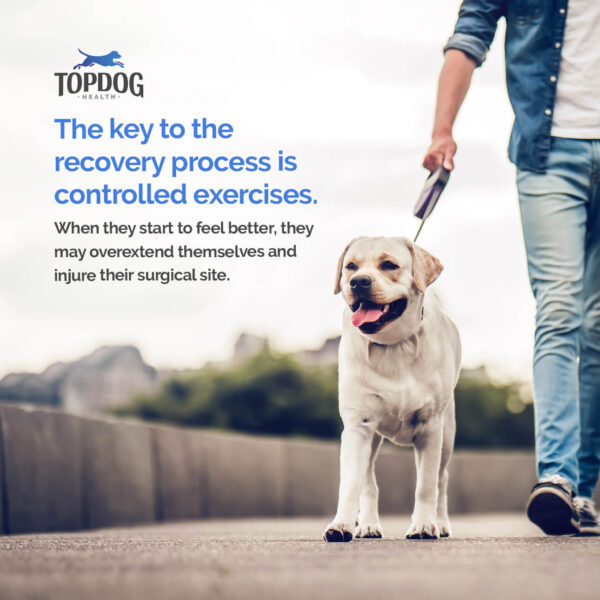
What are the complications?
Like any surgical process, there are always risks involved when it comes to anesthesia and surgery itself. Before any surgery is performed, you and your veterinarian can determine if your dog is a good surgical candidate.
Typical post-surgery complications can include; incision swelling, site infection, drainage of seroma. These complications are considered minor ones and can be solved with antibiotics, icing, or other methods.
The potential more significant complications of a THR can include; infection of the prosthesis, dislocation of the prosthesis, or loosening of the prosthesis. Statistics show these major complications only occur in about 2-4% of patients that undergo a THR. RETURN TO TOP
